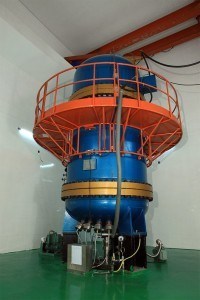eBeam Cross-Link Primary Jacket

LOROM’s State of the Art Electron Beam Irradiation Plant provides solutions and a selection of insulation materials for advanced applications. Many applications have environments, which have cycling temperatures, exposure to aggressive chemicals and mechanical challenges.
Our material science and eBeam process provides a solution for these challenging applications through the crosslinking of standard polymers. Cross-linking improves the performance of these standard polymers as these materials are at the limits of their capabilities in meeting the demands of most of these challenging applications.
Crosslinking materials are a cost effective solution which significantly improving the properties of these materials to levels normally only achieved by high cost and often difficult to process fluoropolymer high performance materials.
At LOROM we offer all crosslinking technologies available, such as chemical crosslinking, which is commonly used in the industry, as well as our radiation e-beam crosslinking. Comparing the two different crosslinking technologies eBeam crosslinking enables us to crosslink a large variety of plastic materials at higher line speeds, driving overall cost down, which can meet the critical economical price points of our diverse customer base.
eBeam crosslinking, the energy to modify the polymer is delivered directly by the electrons with precision and control. The crosslinking happens instantaneously as the material meets the electron-beam and the enhanced properties have been achieved.
Comparing eBeam with chemical crosslinking the raw materials for electron-beam crosslinking do not require reactive materials, unlike those of chemical crosslinking needing additives.
Using additives that are thermally unstable will lead to unwanted product performance behavior and reactions depending on the application environment. eBeam crosslinking happens at normal ambient temperatures and pressures therefore the virgin material is not subjected to thermal stresses, unlike the process of chemical crosslinking .
Thinner wall insulation dimension can further be realized compared to chemical crosslinking due the level of process control as well as prevention of contamination of virgin material.
In short positive effects of electron-beam crosslinking. After insulation systems and materials have been exposed to the eBeam. The polymer chains are linked to each other and the polymer can no longer melt and flow. These unique characteristics improve the temperature resistance, as well as improved resistance to solvents, oils and not least abrasions.
Radiation containment and our personnel safety system
When the electrons strike the product or parts of the product handling system a large number of x-rays are generated so the process needs to be enclosed in suitable radiation containment area.
The LOROM radiation unit is encapsulated in an underground separate concrete bunker.
When the eBeam is turned off there are no radiation hazards, during operation safety locks denying entry to the bunker and personnel safety is insured to the highest possible safety standards.
There is no residual radiation, even after 25 years in operation a shielding bunker does not become radioactive.
Solar Industry:
- UV resistance
- Increase of current carrying load
- Improved aging > Extended lifetime
- Increase temperature >Heat resistance
- Mechanical stress resistance
Mass Transit:
- Resistance to solvents & fluids
- Reduced wall thickness of insulation
- Increase of current carrying load
- Extended lifetime
- Reduced flame propagation
- Improved fire performance
Motor and Coil Winding:
- Resistance against varnish
- Short circuit resistance
- Heat resistance
- Mechanical stress resistance
Automotive Industry:
- Oil and solvent resistance
- Reduced wall thickness of insulation
- Short circuit resistance
- Heat resistance
- Mechanical stress resistance
- Cut through resistance
Chemical Cross-Link Primary Jacket
Crosslinking is formed by chemical reactions that are initiated by heat and pressure. For example, mixing of an un-polymerized or partially polymerized resin with specific chemicals called crosslinking reagents results in a chemical reaction that forms cross-links.
The types of cross-linked polyethylene we process are made by the addition of peroxide during extrusion or by addition of a cross-linking agent and a catalyst during extrusion.





